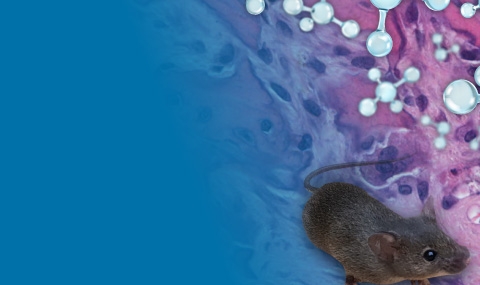In 2012, Aker and colleagues published the first link between sorting nexin 10 (SNX10), a vesicular sorting-associated protein, and the genetic disease autosomal recessive osteopetrosis (ARO). That study showed that the R51Q mutation in SNX10 was most likely the cause for ARO in Palestinian cohorts residing in villages near the city of Hebron. We have subsequently produced a knock-in mouse model for R51Q SNX10 that recapitulates the main symptoms of humans who are homozygous for this mutation, including early-onset, and widespread osteopetrosis, stunted growth, failure to thrive, and reduced lifespan.
Analysis of osteoclasts from homozygous R51Q mice reveals a collection of highly unusual phenotypes. Osteoclasts are large, multi-nucleated cells that are formed by fusion of precursor cells from the hematopoietic monocyte-macrophage lineage. The details of this fusion process, and especially what stops it when the fused cell reaches its appropriate size, are not understood. Live-cell microscopy of R51Q SNX10 homozygous mutant osteoclasts revealed a deregulated and continuous fusion process that results in the formation of giant polykaryons that are over 50 times larger than wild-type control osteoclasts. The fusion process in the mutant cells also occurs significantly faster than in wild-type controls, includes an abnormally high incidence of fusion between mature, multi-nucleated osteoclasts, and the resulting cells maintain the separate microtubular networks of the fusing cells and do not integrate them into a single network. Mutant osteoclasts also exhibit impaired ruffled borders and cannot resorb bone, providing additional basis for the osteopetrotic phenotype.
These results show that R51Q SNX10 directly causes osteopetrosis by deregulating osteoclast formation and function. Importantly, this study also indicates that the size of osteoclasts is determined in an active manner that is genetically regulated and is not a simple stochastic process. Moreover, this mechanism is dependent on SNX10, and the R51Q mutation in SNX10 disrupts it, opening the door for studies of novel aspects of osteoclast formation and activity.
These studies are beiong performed in collaboration with the groups of Prof. Benjamin Geiger (WIS) and Jan Tuckermann (University of Ulm, Germany).


